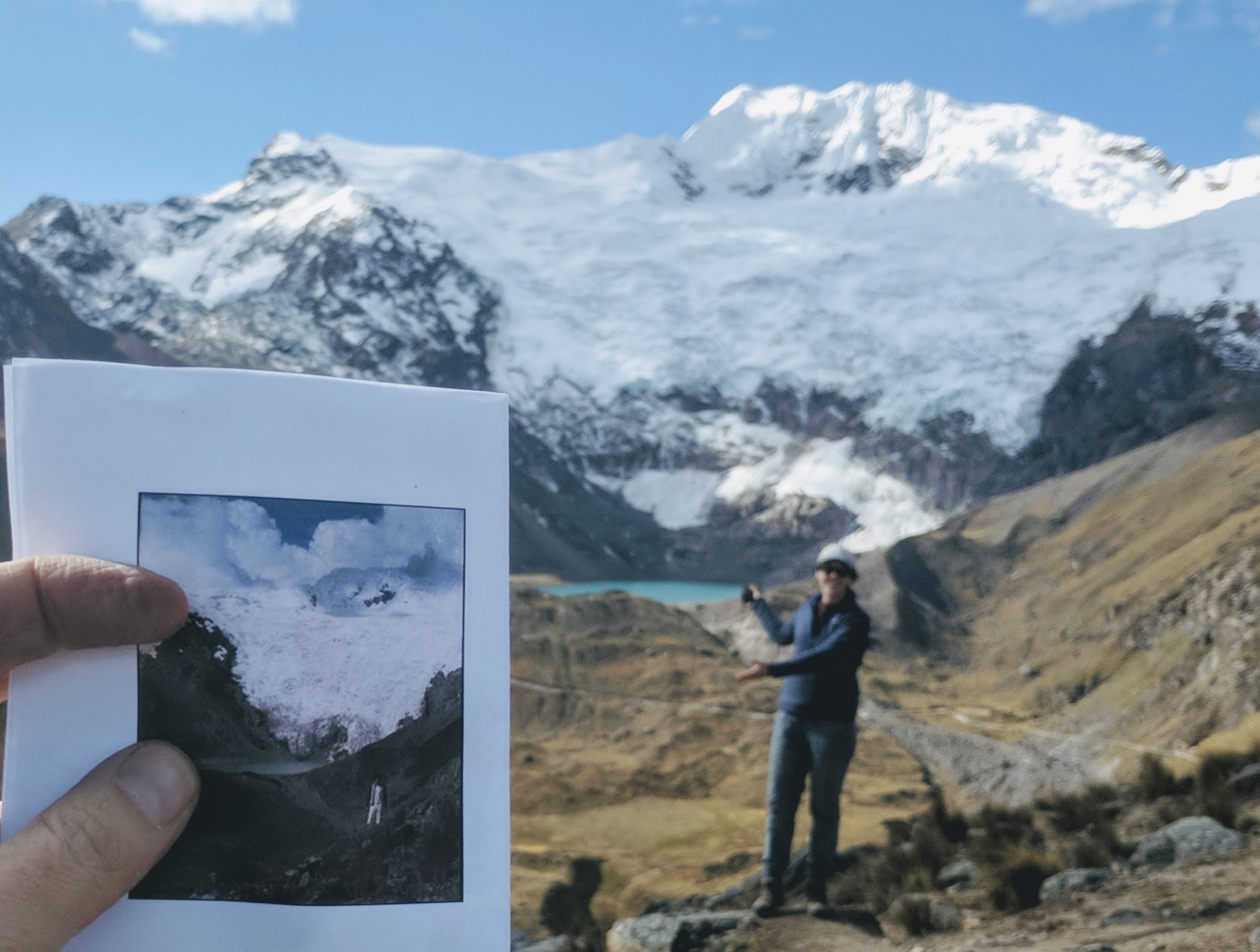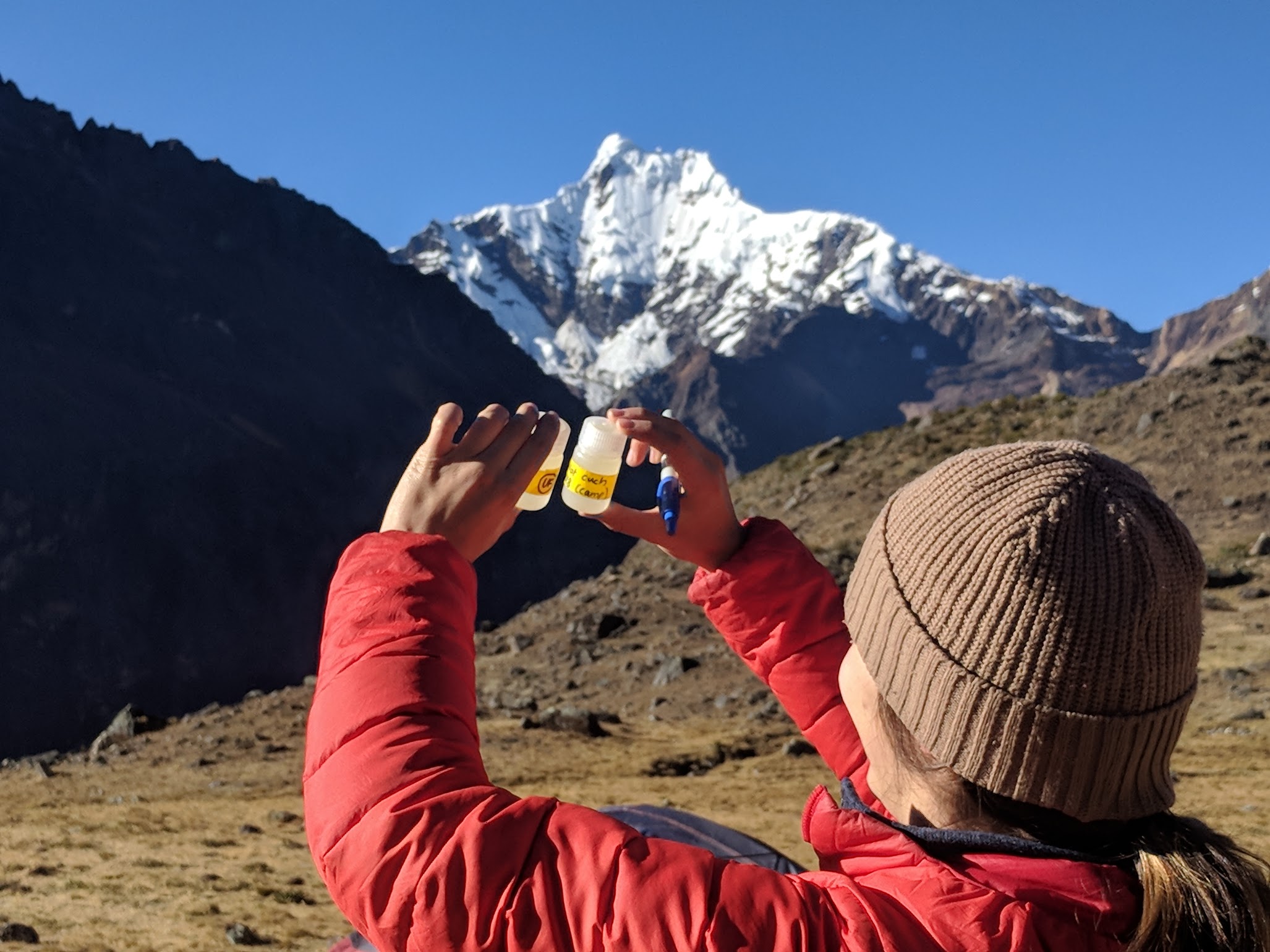Tropical glaciers are receding, but hidden groundwaters can make up the difference
For now
Jeffrey McKenzie
In Peru, tropical glaciers coat the Andes, overlooking the arid Pacific coast. It's counterintuitive, but glaciers can form in the otherwise balmy tropics due to high mountain elevations. 70% of Earth's tropical glaciers sit in the Peruvian Andes. These mountain glaciers are essential sources of water. Snow and glacial meltwater feed into rivers that bring water into foothill communities — a lifeline during the dry season where rainfall is minimal.
But, as global temperatures rise, Peru’s tropical glaciers are receding at a record pace — a 40% decrease in coverage since the 1970s. This dramatic increase in glacial meltwater has led to a temporary boom in irrigation and development downstream, though the rate of usage of this water is not sustainable forever. Over 70% of studied glacial watersheds in the Cordillera Blanca mountain range — part of the larger Andes range — have reached “peak water”, meaning the rate of meltwater coming from glaciers has reached its maximum and is now decreasing. What will happen to the millions of people who rely on glaciers for water once they disappear?

Somers recreates a photo from the 1980's of the Huaytapallana glacier
Jeffrey McKenzie
Scientists are now searching for answers beneath the surface. A study led by Lauren Somers, a former PhD student at McGill University, examines the role of groundwater in the mountain water cycle. Groundwater is found underground in soil pores and bedrock fractures. Although it’s a major source of freshwater globally, it has been overlooked in mountain water research until recently.
“It’s really difficult to get data on [groundwater] because a lot of mountains are remote, groundwater wells are expensive, and you can only monitor one point with each well," says Somers. "There also aren’t a lot of existing wells on mountain tops.” To overcome this data deficit, her team incorporated field measurements into computer models to simulate their study site, the Shullcas watershed in the Peruvian Andes, located near the city of Huancayo, 300 kilometers east of the capital city Lima.
In the Andes, groundwater is replenished by both glacier meltwater and precipitation that seeps into the soil during the rainy season. Over the course of the dry season, the groundwater slowly drains into rivers, contributing to river flow. Somers used computer models to simulate these groundwater processes in conjunction with the glacier and river systems to learn more about the Andean water cycle. “We wanted to model [the processes] and push them into climate change simulations to answer the ultimate question: what is the current and future role of groundwater storage in a mountain catchment in the Andes?” explained Somers.
The model results show that the Schullcas watershed reached peak water around 2013, meaning the amount of glacial meltwater feeding into the Rio Schullcas will continue to decrease until the glacier disappears. On the other hand, the results also show that glacial meltwater only accounts for about two percent of annual groundwater recharge, due to the small area the glaciers cover relative to the entire watershed. This means that groundwater can continue to be a buffer for the water supply as glaciers shrink. But under “business-as-usual” climate projections, less rain and snowfall are expected to reduce groundwater recharge, while rising temperatures will increase evaporation and water use by plants, tapping into the groundwater storage. With a decrease in supply and rising demand, the total volume of groundwater will shrink. The simulation results indicate that in about 60 years, environmental factors are expected to affect groundwater supplies, reducing dry season river flow.

Somers examines water samples taken below the Cuchillacocha glacier
Jeffrey McKenzie
Water management will become increasingly important for the city of Huancayo over the next few decades. The city of 365,000 residents relies heavily on the water from the Rio Schullcas, its primary water source, during the dry season for municipal and industrial needs. It is not uncommon for the river to run dry. Upstream of Huancayo, the river sustains small-scale agriculture and livestock. Engineering projects such as micro-dams and larger reservoirs can store rainy season water for dry season use, though there are social and environmental drawbacks. Other methods such as digging trenches along mountain slopes to increase groundwater infiltration and storage were also studied. “Some groundwater-based climate change adaptation strategies do have promise, but they require careful consideration because everything has side effects,” said Somers.
Though the future of water resources in the Shullcas watershed is uncertain, the citizens of Huancayo are ready to take action. Somers and her team have done multiple outreach events in the city with their Peruvian partners to engage with the public. Last summer, they hosted a one-day conference with politicians, government employees, and students to discuss glaciers and climate change in the Shullcas watershed. “People are interested, concerned, and fired up,” emphasized Somers. “There’s will among the people to be good environmental stewards and a lot of passion in the spiritual significance in the mountains and the mountain glaciers. I feel hopeful when I see the passion people have for their home.”
Peer Commentary
Feedback and follow-up from other members of our community
Olivia Bernard
I really enjoyed this article. It is rather common to discuss the consequences receding glaciers will have on sea-level rise and on habitat-destruction in the Arctic Circle. In my experience with public engagement, these topics have often been interpreted more conceptually, as threats that are far off and far away. You highlighted research that, in my opinion, provides us science-communicators with a very impactful climate change narrative. Glacial recession is happening and it is affecting people now. That human dimension, the response of the people who rely on this watershed, will catch people’s attention; it certainly caught mine!
Ethan Kyzivat
Remote Sensing
Brown University
Thanks for bringing attention to groundwater in tropical glacier environments. If I recall, the recent IPCC Special Report on Ocean and Cryosphere in a Changing World made little mention of groundwater in their section on peak water. In fact, few existing studies focus on groundwater in the glacial hydrological cycle, but groundwater will play a larger role as these glaciers retreat.
The issue of water supply in glacial and snowpack-fed watersheds is also of growing concern. It sounds like the community in Huancayo has a lot to lose with glacial retreat, but is mobilizing to find alternative water sources. Such actions are necessary in many other regions globally, and this study should serve as a case example.
Marnie Willman
Virology
University of Manitoba Bannatyne, National Microbiology Laboratory
Great article! While this is definitely outside of my area of study, the problem of receding glaciers is one that affects all of us one way or another. When they’re ultimately gone, the world is going to undergo a massive change, including movement of populations currently dependent on this water source, as you mentioned, and shifting of animal habitats as well. The silent epidemic facing the globe under the Coronavirus and Ebola headlines are climatic shifts like this one. A well informed, eloquently put article. Great read :)